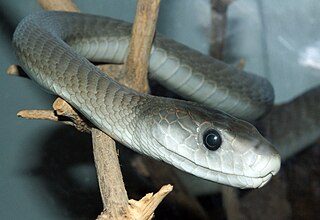Related Research Articles

The Maji Maji Rebellion, sometimes called the Maji Maji War, was an armed rebellion against German colonial rule in German East Africa. The war was triggered by a German policy designed to force the indigenous population to grow cotton for export, and lasted from 1905 to 1907. The war resulted in 250,000–300,000 total dead, mostly civilians from famine.
An unclassified language is a language whose genetic affiliation to other languages has not been established. Languages can be unclassified for a variety of reasons, mostly due to a lack of reliable data but sometimes due to the confounding influence of language contact, if different layers of its vocabulary or morphology point in different directions and it is not clear which represents the ancestral form of the language. Some poorly known extinct languages, such as Gutian and Cacán, are simply unclassifiable, and it is unlikely the situation will ever change.
Matuumbi, also known as Kimatuumbi and Kimatumbi, is a language spoken in Tanzania in the Kipatimu region of the Kilwa District, south of the Rufiji river. It is a Bantu language, P13 in Guthrie's classification. Kimatuumbi is closely related to the Ngindo, Rufiji and Ndengereko languages. It is spoken by about 70,000 people, according to the Ethnologue.

The black mamba is a species of extremely venomous snake, a member of the family Elapidae native to parts of sub-Saharan Africa. First formally described by Albert Günther in 1864, it is the second-longest venomous snake after the king cobra; mature specimens generally exceed 2 m and commonly grow to 3 m. Specimens of 4.3 to 4.5 m have been reported. Its skin colour varies from grey to dark brown. Juvenile black mambas tend to be paler than adults and darken with age.
The Ngindo are an ethnic and linguistic group based in southern Pwani Region and northern Lindi Region in Tanzania, who speak the Ngindo language. In 1987 the Ngindo population was estimated to number 220,000 Prominent Ngindo people include. Saidi Alli Amanzi former District Commissioner of Masasi, Nyamagana, Morogoro and Singida from 2006 to 2016. .
The Somali Bantu are a Niger-Congo-origin ethnic minority group in Somalia who primarily reside in the southern part of the country, primarily near the Juba and Shabelle rivers. They are descendants of people from various Bantu ethnic groups, who were acquisitioned from Southeast Africa and sold into slavery in Somalia and other areas in Northeast Africa and West Asia as part of the Arab slave trade. Somali Bantus are ethnically and physically distinct from indigenous Somalis of Cushitic descent, and they have remained marginalized ever since their arrival in Somalia.

The 250 or so "Narrow Bantu languages" are conventionally divided up into geographic zones first proposed by Malcolm Guthrie (1967–1971). These were assigned letters A–S and divided into decades ; individual languages were assigned unit numbers, and dialects further subdivided. This coding system has become the standard for identifying Bantu languages; it was the only practical way to distinguish many ambiguously named languages before the introduction of ISO 639-3 coding, and it continues to be widely used. Only Guthrie's Zone S is (sometimes) considered to be a genealogical group. Since Guthrie's time a Zone J has been set up as another possible genealogical group bordering the Great Lakes.
Edward Saidi Tingatinga (1932–1972) was a Tanzanian painter, best known as the founder of the eponymous painting style and school.
The Rufiji–Ruvuma languages are a group of Bantu languages established by Gloria Waite (1979) and subsequent researchers: N10, P10, P20.

Chiefdoms and sectors of the Democratic Republic of the Congo are the fourth-level administrative divisions of the Democratic Republic of the Congo.
References
- ↑ Ngindo at Ethnologue (18th ed., 2015)
- ↑ Hammarström, Harald; Forkel, Robert; Haspelmath, Martin, eds. (2017). "Ngindo". Glottolog 3.0 . Jena, Germany: Max Planck Institute for the Science of Human History.
- ↑ Jouni Filip Maho, 2009. New Updated Guthrie List Online
| This Bantu language-related article is a stub. You can help Wikipedia by expanding it. |